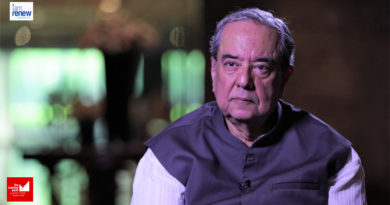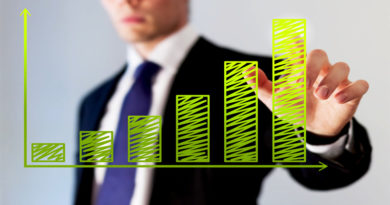In Conversation With Mohua Mukherjee, Program Ambassador, ISA
Next Generation Women will have Opportunities to Involve in Different Parts of Solar Value Chain

Women of the next generation will have opportunities to be involved in many different parts of the solar value chain, including designing these new, energy-efficient solar gadgets or appliances, as well. We just need to start their familiarity with solar energy when they are still kids, believes Mohua Mukherjee, Program Ambassador Pro-Bono, International Solar Alliance (ISA), an international, inter-governmental organization headquartered in India. In conversation with Manu Tayal, Associate Editor, Saur Energy International, Mukherjee expressed her views on various topics related to solar and renewable industry, her experiences in the industry, women participation in the renewable energy segment etc.
Q. Tell us about how you found yourself in the renewables sector. Was it a planned move?
I became a fan of renewables while working in about 15 African countries from 2003 to 2009 during my previous job at the World Bank. I should mention micro-hydro plants before I talk of solar. In Tanzania and in Nigeria I saw communities depending on small hydros. But those of us who get grid electricity don’t have to do any more than switch on and off, and we never have to think about how the grid works. Meanwhile, these rural consumers depending on microhydro or solar were unfortunately left alone to deal with all the problems as soon as the construction was completed and the plant was commissioned and all the engineers left the site! This was one feature of renewables that I definitely did not like. No one took responsibility for actual service delivery of renewable energy in those days. The villagers were not sufficiently trained either, so very often the renewable plants in the village (solar or hydel) were not working. But still we knew that renewables were the only answer, so better training and trouble-shooting arrangements were needed. Why did we have to depend so much on renewables? I was already very familiar with the difficult financial situation of the discoms in many of the countries. I knew that areas without electric connections were highly likely to remain so for many decades to come. It was clear that there were not enough funds to expand the grid.
In those early days, solar energy was still very expensive and solar LED lamps and lanterns were still in the experimental stage, not yet commercially available. Surprisingly though, because people in many African countries were already used to paying very high prices for their use of diesel and kerosene in remote areas, they were willing to invest in high-priced solar panels just to get relief. African consumers already had a high monthly expenditure on energy. To them, those early expensive solar panels did not seem as out-of-reach as they would to an Indian rural customer who used to buy subsidized kerosene and diesel back then. I will never forget the joy and magic and party atmosphere throughout a village, that came from turning on one solar streetlight in Nigeria around 2005. I am fortunate to have been invited there to witness it. I used to wish in those days that something will happen to bring down the price of renewables so that more people could benefit from it. Rural areas with no hope of the grid any time soon, should be able to easily get access to affordable renewable energy, I used to wish hard. Now thanks to global market developments, it has come true! Solar prices have tumbled, to the point that many very efficient solar gadgets like lights, fans, TVs, coolers, are now available commercially. In the African country of Togo, the government is even buying people’s solar home systems for them, because they know they cannot give grid connections. People will only have to pay for their energy used. It is transforming lives, especially of lower income families. The Togo government deserves great recognition for their leadership on this. Personally, I have been privileged to watch this sector from the front row, while it was undergoing a rapid transformation, for the last 15 years!
Q. What are the positives in this sector that will make it attractive for women, and people in general?
There is a wonderful mindset to be found in most people, male or female, who are working in this sector. Every one of them enjoys talking about what they do. It is made for people who truly love solar energy. They love the fact that it is clean, it is a free resource shining down from the sky, and it is not creating pollution or harming the planet. People working in solar have lots of good messages to share when they are working:
Installation companies enjoy marketing this solution to prospective rooftop customers, and explaining how much money the customer will save every month if their discom has net metering. This means that while they are taking power from the discom at night, they are producing power on their rooftop and selling it to the discom during the peak sunshine hours of the day. The amount purchased and the amount sold is netted off, and there is a huge drop in the electricity bill right from the beginning. This kind of customer education is a pleasure!
Engineers who design large solar parks are also very enthusiastic about their work, particularly with the latest technology applications that allow them to remotely check the performance of each one of their thousands of panels, and know where to repair faults or replace equipment. I should amend my statement to say that these same engineers are probably the most stressed out people on earth when they have to submit a tender for a large scale solar project, because bidding is so aggressive in India these days! But I am sure they still love their field. We need more women to be trained as solar engineers. I see very few of them. Even fewer are trained as installers to climb onto roofs, but until we improve our safety culture in India, that’s OK by me!
Then there are the finance specialists, who work on finance and legal aspects of solar power purchase agreements and various contracts.
I have just one message to women who are considering employment in any aspect of the solar industry: SOLAR IS HERE TO STAY IN INDIA—please join us!
Q. What do you think can be done to ensure that the solar sector attracts more quality professionals, including women?
I think that education about solar energy should start in school, from the age of 10. I think small kids should be told that electricity can come from sunlight falling onto a solar panel. Alternatively it can also come from burning coal to get electricity to run our fans and lights. Kids should learn and go home and educate their parents and elders. If we start opening kids’ minds to solar energy from a young age, this will not be seen as a boys or girls subject. If solar is part of the curriculum from age 10-16, and girls develop an interest in solar energy right from childhood, they will enter the sector in larger numbers. Apart from solar engineers and electrical engineers who will design the specifications of new projects, the solar sector needs numerous other people with a variety of skills. Here are just a few thoughts: (i) communication and public relations to raise awareness in the general public about solar energy adoption; (ii) environmental science (to figure out policies and strategies for endof-life disposal of solar panels, which need to be treated like electronic waste); (iii) project management; (iv) getting permits from discoms to connect rooftop panels to the grid; (v) contract management with customers of a solar company; (vi) loan negotiations with commercial lenders to a solar project; (vii) data analysis of various kinds, including from sensors and communications equipment that is installed to automate processes in a solar plant; (viii) conducting rural surveys and focus group discussions before construction of solar mini-grids; (ix) training a sales force including female saleswomen to find customers and boost demand for solar powered appliances in areas with unreliable grid electricity; (x) customer management and after-sales service for solar powered appliance sales.I believe that the next frontier in solar is already coming: we will soon all have various personal gadgets, like fans and lights and even fridges in future, which will be run on solar energy. Even if we have a connection to the electric grid, some people have very high monthly bills. If they can substitute and use a solar-powered gadget for a few hours, then they will lower their electric bills. Plus the solar gadget is cute and fun to use! (Disclosure: I recently bought a solar fan online, just to see how long it works during the night, after charging it during the day, and whether I consider it a good substitute. So far the answer is YES! I love it!)
So women of the next generation will have opportunities to be involved in many different parts of the solar value chain, including designing these new, energy efficient solar gadgets or appliances, as well. We just need to start their familiarity with solar energy when they are still kids!
Q. Did you ever find your work in renewables more demanding than elsewhere? How do you manage your time?
I do what all working women everywhere do! We just have to get on with it and become experts at juggling our own schedules and everyone else’s, who depends on us. Solar energy is no more or no less demanding than any other sector in that respect.
It really also helps if you love what you do, so that you can benefit from an internal hidden source of energy that comes from your passion for the work. It prevents you from feeling tired or stressed after the normal length of the workday. This passion gives you an extra boost to your internal battery, keeping it charged for an extra 2-3 hours after it should have already run out. This internal energy boost, if available, comes in handy for the extra work of juggling others’ needs and maybe sometimes putting your own needs on hold, which is unfortunately very familiar to most working women, regardless of which sector they are in. I think that the knowledge of being in a sector that is dynamic and exciting and good for the planet, cuts down on air pollution levels and makes use of a free and abundant natural resource like sun-shine, are all very positive points. For women who are scientifically inclined, I urge you to please consider going into research and development of new solar powered products—things we cannot even imagine yet today, that will be perfectly designed to run on solar power and grid power, or a battery, depending on whichever is available.
The Indian large-scale solar industry has amazed the world for the speed at which it has grown since 2015, and also for the competitiveness of tariffs that have been seen at auctions. We have earned our place on the international map for that. But now, let us turn to the small-scale solar sector, so that we can bring the benefits of solar technology into the hands of the common man, who is living on a limited income, and let us help him to save some money on his energy expenditures by finding solar solutions for him. Women who are interested in solar –please come and join the effort! Once upon a time it was hard to imagine an individual ever owning a computer. They were shared assets in large university basements. Before we could blink, we went from desktops to laptops to netbooks and I-Pads. Our smartphones are now the most powerful computers, in our pockets and handbags.
We urge women to join the solar sector in large numbers—help us to take advantage of the remarkable price declines of solar panels, and help us to follow a solar journey as amazing as that of the personal computer. Today a lot of solar gadgets are imported. With the power of Indian women joining the sector in large numbers, I am sure that in a few years from now we will be proudly able to BUY INDIAN!
Published with permission from Saur Energy




